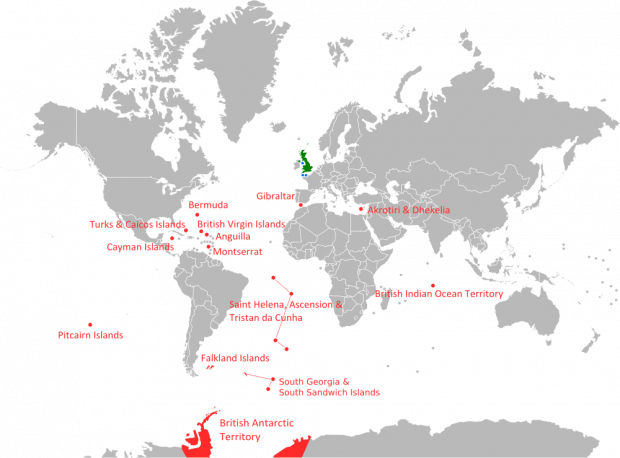In this blog we embark on an exciting journey with Jill Key, project manager for the GB Non-native Species Secretariat, to learn how APHA is working to strengthen biosecurity in the UK Overseas Territories.
UK Overseas Territories (OTs)
The UK has 14 OTs which are mostly islands and immensely varied, from small tropical islands such as Pitcairn to the large icy expanses of South Georgia. The OTs together account for 94% of the UKs unique biodiversity and as such, make a significant contribution to global biodiversity. Being predominantly islands, the OTs are very vulnerable to the introduction of potentially harmful pests, weeds and diseases, recognised as the biggest threat to island biodiversity as well as to livestock production, agriculture and sustainable development.

Importance of biosecurity
Biosecurity (defined as measures to reduce the risk of new pests, weeds and diseases) has long been acknowledged as the most cost-effective means of addressing invasive species threats for small islands, but capacity is a big problem for many OTs.
In response, in 2016 Defra and the GB Non-native Species Secretariat (NNSS) secured funding over four years (2016-2020) under the Foreign and Commonwealth Office’s Conflict, Stability and Security Fund to help the development of comprehensive biosecurity for the OTs by providing them with access to UK expertise, with particular attention to preventative action and the development of effective biosecurity policies.
The project is managed by the NNSS, part of APHA, working in collaboration with a number of UK agencies and organisations to deliver the project, including Fera Science Ltd. and CEFAS.
One of the main activities to date has been the delivery of horizon scanning workshops and initiation of pathway action plans. The aim of horizon scanning is to predict the likelihood of the arrival and establishment of new pests, weeds and diseases that are most likely to impact biodiversity and ecosystems or impact socio-economically (agricultural production, livestock and public health) in the next 5-10 years. This prediction allows limited resources to be targeted very cost-effectively at key pathways of entry. A summary of each workshop can be found on the OT Biosecurity project webpage which also lists the priority species identified for each OT.
In addition to the horizon scanning, technical support has been provided to the British Virgin Islands (BVI), South Georgia, and the Falkland Islands to help each OT strengthen their biosecurity programme. BVI is recovering from two category 5 hurricanes which hit the islands in 2017, Hurricanes Irma and Maria, and are concerned that the flood of imports associated with recovery is increasing the biosecurity risk. South Georgia recently declared the island rat-free after a £10 million eradication programme, and needs to be sure that the risk of introduction of rodents is minimal, while the Falklands requested a general review of their biosecurity procedures.
Another big activity is the development of model biosecurity legislation in a format that makes it available to any OT for adaptation in the future.

Next Steps
What’s next? One big gap so far is that of wildlife diseases as work to date has focused on pests and weeds rather than animal health. A first step towards addressing this will take place in the Falklands Islands in April 2019, looking at the risk of introduction of new pathogens which could affect both livestock – sheep – and wildlife, specifically penguins and seals. Another new initiative, starting next financial year, is the opportunity for OT biosecurity officers for work experience and training with the APHA Plant Health and Seeds Inspectorate.
For further information on the OTs and the biosecurity project, visit the NNSS website.

Recent Comments